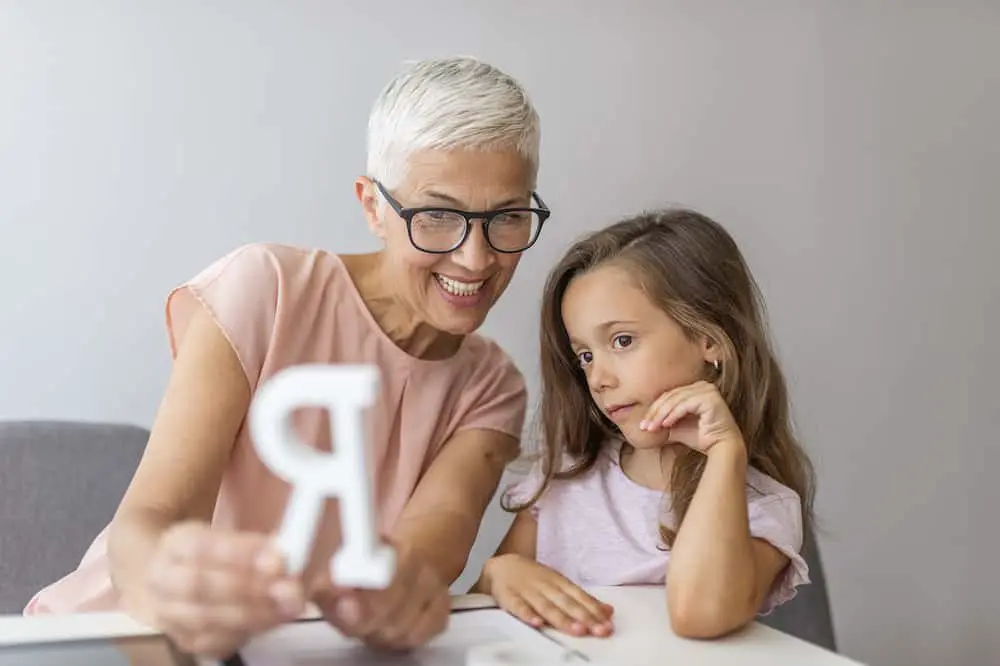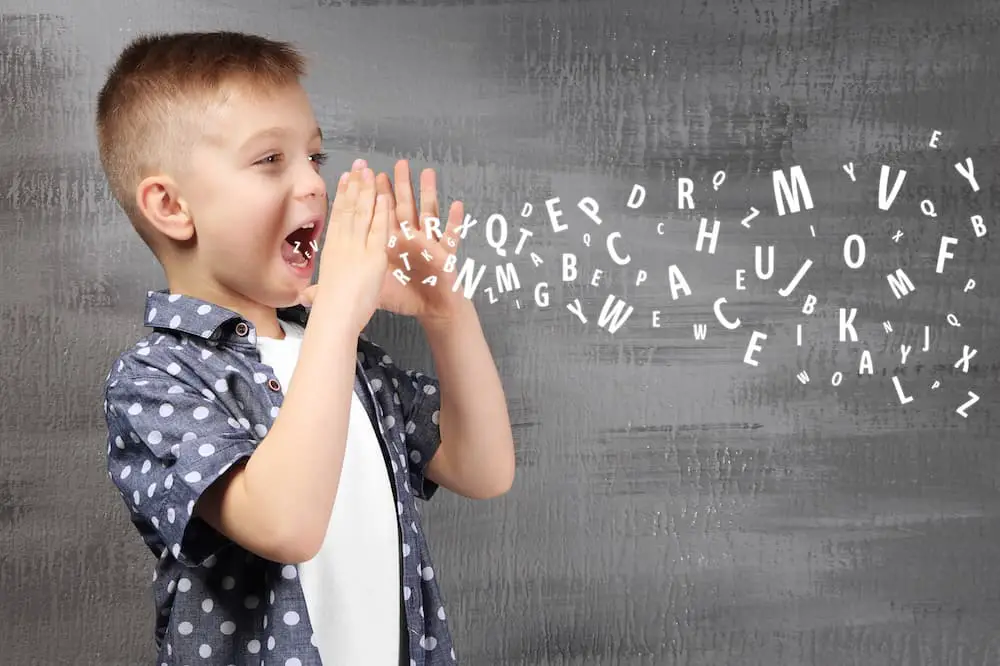Surprisingly, the chasm between language disorder vs language difference is one of the most overlooked concepts of language development.
Multicultural children experience several challenges daily, one of which is acquiring the use of English.
It is essential to determine whether a child’s delayed language acquisition is due to a disorder or simple misunderstanding.
What Is a Language Disorder?
Before we get into the details of language disorders and differences, it’s important to know one from the other.
A language disorder is often characterized as instances when children find it challenging to express themselves.
You will also notice children having problems understanding others, such as an inability to comprehend basic directives.
An important facet of language disorders is that they occur separately from hearing issues.
It’s often that children with language differences are considered to have a language disorder due to a lack of understanding.
When a child cannot understand a directive, they cannot express themselves, similar to children with language disorders.
What Is a Language Difference?
Strikingly different from a language disorder, language differences are defined as instances of challenging second language acquisition for children.
You might notice their skills are proficient in their native language but lacking in English or any other second language.
Due to their lack of proficiency in the second language, they are often mistaken for having language disorders.
As we explore in this guide, it is possible for a child with a language difference to also have a language disorder.
Using unique assessment techniques, speech-language pathologists can differentiate one from the other.
Often, language disorders in ESL learners appear in both their native and second languages.
Language Disorder vs Language Difference: The Dangers of Misdiagnoses
Incorrectly diagnosing multilingual children as having language disorders is common in school and professional settings.
This point is particularly true because it appears that a child’s language reception and expression are delayed beyond that of their peers.
It makes it more challenging for multilingual children to develop English-language skills and does an injustice to their total education.
Multilingual children misdiagnosed with a language disorder do not receive the resources to acquire English comprehension skills.
Also, they could be placed in classes that are significantly below their learning level, making it even more challenging to develop an appropriate education.
This reason is why adequate steps must be taken to diagnose language disorders outside of language differences.
It is important to note that multilingual children can also present a language disorder with a language difference.
Focusing on determining whether the core issue is a lack of English knowledge can assist with developing an appropriate treatment plan.
With the help of ESL (English as a Second Language) teachers, these children can get assistance in various ways.

How to Identify a Language Disorder
One of the best ways to determine if a child is dealing with a language difference or disorder is to target the condition first.
If a child’s background isn’t readily apparent, it is best to determine if they have difficulty receiving and expressing language.
From there, educators and specialists can target the fundamental symptoms to begin treatment.
Identifying a language disorder will require the assistance of a speech-language pathologist (SLP).
These professionals are trained in administering language assessments to rate a child’s language proficiency compared to their peers.
With their assistance, families can determine whether their children have a speech delay, disorder, or an entirely different concern.
Typically, children will be required to take a language assessment that provides their performance with a score.
SLPs will then compare this score to their peers and the appropriate milestones for their age.
If a child scores below average, it could indicate a language disorder that requires specialized services.
Where this process becomes more challenging is when working with multilingual children.
Unfortunately, the benchmark tests are often presented in English and can be challenging for non-native English speakers.
In these instances, a different method of assessment must be employed.
How to Identify a Language Disorder in Multilingual Children
Rather than testing a child’s proficiency in English, speech-language pathologists consider a multilingual child’s use of language.
They will closely look at how children develop language, whether they have language loss patterns or a delay in dual language acquisition.
It is also crucial that SLPs consider any preexisting conditions resulting in a presenting language disorder, such as a traumatic head injury.
It is common for families and educators to search for speech-language pathologists specializing in dual language acquisition.
These specialists will have proven experience working with children learning English as a second language.
Through their assessments, it will be easier to tell whether a child finds English learning challenging or has a disorder preventing them from doing so.
Helping Children With Language Differences
Undoubtedly, educational systems have diversified over recent years to accommodate children with learning differences better.
By combining at-home and in-class methods, children can better understand a second language to alleviate any differences.
A few key examples of how we can better assist children with language differences include:
Bilingual Teaching Approaches
The most notable and commonly used method for assisting with language differences is to offer bilingual education to students.
With a well-rounded curriculum, students can learn to develop English skills while using the fundamentals of their native language.
Educators can assist with targeting sounds in both languages and identifying commonalities in both languages’ structures.
Using these methods, the student will find it much simpler to develop proficiency in new languages.
With repetitive reinforcement, the child will experience language transfer for cross-linguistic success.
Encouraging Peer Group Play
Another fantastic way to assist children with language differences is to encourage group play with their peers.
By engaging in daily activities with peers, multilingual students can share their culture and learn the tenets of cooperative work.
They will also be encouraged to develop their second language so that they can communicate with their friends effectively.
With that said, children must have access to guided peer play until they feel more comfortable.
Encourage children to use non-verbal and verbal gestures to communicate with their peers with language differences.
Also, discuss the importance of speaking slowly and clearly to help make communication more effective.
Providing Language-Learning Toys and Tools
There’s no better way to encourage children to learn a language than to give them access to educational toys.
Through engaging activities, they will be able to diversify their language learning using professional techniques.
Here are excellent solutions for children with language differences to use in school and at home:
1. LeapFrog LeapPad Academy Kids’ Learning Tablet
The LeapFrog LeapPad Academy Kids’ Learning Tablet is an interactive tool designed specifically for children.
With an easy-to-use modern design, children can explore 20 educational apps to assist with language acquisition.
As they work through the interactive learning program, they will continually develop new skills to help with communication.
You can download several extra apps to the tablet once your child has completed the standard 20 lessons.
Also, there are many other functions in the device, such as kid-friendly videos and websites for further learning opportunities.
2. Plugo STEM Pack by PlayShifu
STEM is essential for every child’s development, especially those with language disorders.
The Plugo STEM Pack by PlayShifu can help children with AR (alternate reality) activities.
When paired with a tablet, this device helps children learn new words as well as how to spell them.
There are several family-friendly puzzles to be solved with easy-to-use magnetic blocks.
It’s one of the better learning tools because it’s adaptable to learning milestones for specific ages.
What’s more, as your child develops better linguistic, comprehension, and problem-solving skills, you can increase the difficulty.
3. ROYBI Robot
If you are interested in acquiring a bilingual tutor for a child with language differences, the ROYBI Robot is an excellent option.
This highly intuitive AI smart toy is designed for bilingual language learning for preschool children.
It’s designed to assist with teaching essential communication skills and languages through over 500 unique activities.
With this, bilingual children can work through an assortment of science, math, and language activities.
It features a digital personality that initiates friendly conversations with children to enhance language learning.
Also, thanks to its AI technology, it’s highly adaptable to children of all ages.
When it comes to working with language differences, this is one of the top-recommended tools.
The 500+ activities assist with social skills and speech.
Plus, every activity is specially designed by experts and certified educators to cover a wide extent of second language learning.
Language Disorder vs Difference
The differences between a language disorder vs language difference are extensive and incredibly important to know.
Considering the unique differences of multilingual children can assist them with developing improved language skills at an appropriate level.
With specialized diagnostic techniques and activities, children can get the learning assistance they need.




